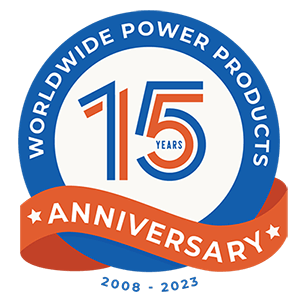The Lure of Industrial Recycling
When most of us think of recycling, we think of plastic bottles and aluminum cans. Consumer and business recycling has slowly picked up steam in recent years as the materials have become more valuable. Recycling (better known as re-manufacturing) is becoming increasingly common on an industrial scale, as well. Machinery-and the metal with which it is built-is too valuable to be discarded after even years of use. As a result, the industry has generated a new term: industrial recycling.
In the case of industrial natural gas and diesel engines, companies “recycle” the engine by completely disassembling it and rebuilding it with a combination of existing (serviceable) and new components. This industrial recycling process essentially returns the engine to new operating condition. The core material of an engine-the steel housing-doesn‘t deteriorate significantly over time, when properly cared for. It’s the pumps, seals, hoses, belts, pins, rings and other components that wear out and must be repaired or replaced.
A prime example of industrial recycling is WPP’s recent sale of two rebuilt Waukesha engines to an oil and gas company in Australia. The firm found the engines-Waukesha 9390 GSI gas engines, to be specific-through a WPP partner. We had procured several of these engines, and the core attributes fit this firm’s needs perfectly. However, they wanted them rebuilt to meet their functional specifications, which we did for them before shipment. (We still have a few left, if you are looking for a reliable, good-as-new industrial natural gas engine.)
The Waukesha 9390 is not a very common engine, like some of those from Caterpillar or Cummins. Nevertheless, these engines are renowned for their ability to perform reliably, around the clock, in rugged, demanding and isolated conditions like some of the terrain in Australia. Their reputation and durability makes them perfect candidates for re-manufacturer. Otherwise, they would be useless.
The steps involved in rebuilding an engine number in the dozens. It’s really an amazing process. After stripping the engine down to the bare crankcase and then stripping the crankcase down to bare metal, we inspect it for cracks and other flaws, repairing any we find. Then, we put it back together as if we were building a new engine. However, at every step-from the camshaft assembly and cylinder head to the governor and clutch assemblies, we inspect, clean/flush and repair, re-manufacturer or replace components as needed to make everything meet manufacturer specs.
WPP is proud of its expertise performing these rebuilds, which give new life to engines, saving companies money and helping the environment at the same time. We also encourage our employees to recycle, at home and in the office, because recycling needs our support. In the USA, citizens recycle and compost nearly 35% of all waste (per the EPA; 2011 is the most recent year reported). Even with that 1/3 recycling rate, Americans are not even keeping up with their own waste increase. In 1960, we generated 2.68 lbs. of waste per day. In 2011 it was 4.4 lbs-a 64% increase.
And with a 35% recycling rate, each individual still sends nearly 3 lbs. of waste to landfills every day. Cumulatively, that’s 163 million tons, per day (2011 numbers). I’ll think about that the next time I even consider tossing an aluminum can into the trash. I’ll also remind my kids that, on the rare occasions when Houston does get snow, they can’t use the recycling bins as toboggans.











